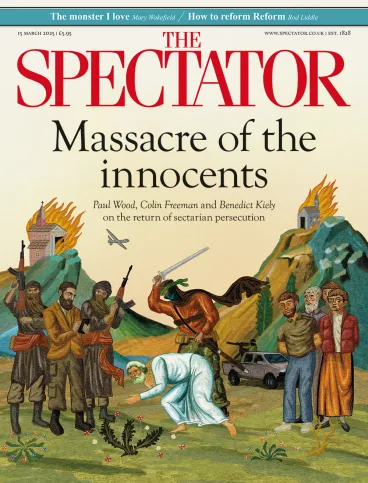
The artist Vanessa Bell, née Stephen, the wife of Clive Bell, is enjoying the limelight this year as an exhibition of her work travels the country. Hot on its coat-tails comes Wendy Hitchmough’s beautifully illustrated new study of Bell’s life and art. As the former curator of the painter’s home at Charleston, Hitchmough writes with insider knowledge, supported by an armoury of scholarship: the bibliography alone stretches to 14 pages and the notes to 45.
Somewhere within this carapace is a uniquely original and talented artist struggling to get out – a true radical whose story was one long, rolling sequence of experiments in leading as creative a life as possible within or without the constraints of her time. Bell was a role model for many, whose art, clothes, aesthetic and decorative sensibility continue to inspire generations of would-be bohemians and whose impact never dims.
She was naturally more reserved than her sister Virginia, later Woolf. She expressed herself in painting, not in words. Was it the patriarchy, the ‘bombastic, male-dominated field of British modernism’ that sidelined her, forcing her into the shadows? Her work was often confused with that of her long-time partner Duncan Grant, largely because they worked as well as lived together, and her reticence was greater than his. Previously unpublished letters are harnessed in an attempt to put her point of view, though they add little but detail. She remains as elusive as a sphinx behind a blizzard of curatorial facts about works finished or not, exhibited or not, and often questionable claims about them.
I was alarmed to read, for instance, of Bell’s only known sculpture, an unassuming if stylised depiction of the Madonna and Child, that it ‘traces the outline of a vulva with the woman’s head, shrouded by her blue hooded gown, in the place of a clitoris’. Goodness, how naive I felt not to have noticed that, and even more so when, in a discussion of the brightly painted artificial flowers that Bell made for the Omega Workshops – one of their most successful lines of merchandise – I read that ‘Roger [Fry] recognised the erotic connotations of Vanessa’s flowers, referencing male and female genitalia’. We all know that the Bloomsberries liked to épater les bourgeois, but might this be going a bit far?
Vanessa and Duncan kept their daughter Angelica entirely ignorant of her parentage until she was 18
Likewise, there is little or no inquiry into the emotional substrata of Bell’s world. It would be hard to find a portrait more passive-aggressive than the one she painted of her husband’s mistress, Mary St John Hutchinson, whom she portrayed as supercilious and pouting in bilious lime green. Yet the description ‘unflattering’ is the nearest we get to any exploration of the complex dynamic between artist and subject, or the psychological truth of the work. The word ‘radical’ is used passim of Bell, and, yes, she broke many rules, artistic and domestic, with courage and conviction. But there is no consideration of how this related to the central contradiction of her life: that, despite the open nature of Bloomsbury partnerships, she and Duncan kept their daughter Angelica entirely ignorant of her parentage until she was 18, a deception that Angelica found impossible to forgive.
Hitchmough provides an exhaustive catalogue of Bell’s artistic initiatives, but couched in language that I found obscured rather than clarified her achievements, in a fog of modish artspeak. After reading once too often that a particular painting ‘challenged gender stereotypes and the objectification of women in paintings by men’ and a great deal more in this vein, it was a great relief to read her sister Virginia’s crisp grasp of ‘the extreme brilliancy and flow and wit and ardour’ of the same work and its deft storytelling qualities.
Euphemia was not a good chooser of men, counting the appalling Aleister Crowley among her lovers
Euphemia Lamb, born Annie Euphemia Forrest in Ormskirk, Lancashire, was a constant source of fascination to the Stephen sisters. They first met in 1905, when Euphemia dazzled into their drawing room on the arm of her newly acquired fiancé, the painter Henry Lamb. Andrea Obholzer’s slim biography, A Bloomsbury Ingénue, is misleadingly titled, since ingénue was emphatically what Euphemia was not. She spun tall tales about a wealthy family and a Russian count whose clutches she had evaded; and she was, at 17, so pretty that everybody wanted to paint her. Virginia Woolf was to base the unreliable Florinda in Jacob’s Room on her, and she dances in and out of Woolf’s letters and diaries for many years, just as she flitted between bohemian London and Paris as artist’s model and muse.
Transgressive and outlandish, she was hardly a good chooser of men, counting the appalling Aleister Crowley among her many lovers, all of whom she drove mad with lust. Meanwhile, she was furthering her own education by mugging up on Shelley and Dangerous Liaisons – appropriately.
Obholzer presents her as an emancipated woman who could ‘embrace the male gaze and be empowered by it’. She did indeed eventually settle down and enjoyed a successful career as a café hostess, hobnobbing with Augustus John to the end.








Comments